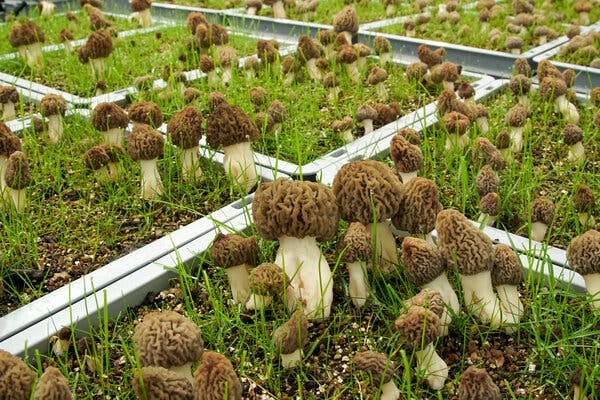Hey there Fungi Friday fans,
Happy Friday! These weeks are just cruising by, hard to believe it’s already May. First, let’s get into a quick biz update… spent last weekend down on the farm, so far so good on the first 10 bags of blue oyster spawn. Little bit of a curveball when we showed up and were short on power, but lack of sun and lots of rain sure can make solar power unreliable, so was to be expected. Nonetheless, quick trickle charge on the batteries, refill of the humidifier tank and we even packed another 10 bags of spawn into more hay filled substrate.
Now that we’ve got 10 bags approaching their 2 week mark and 10 more at around one week in incubation, one more checkin early next week to make sure we still have power and a water supply and we should officially be ready to transition from incubation to the fruiting chamber the following weekend. That’ll be the real check to see if us amateur mycologist are starting to get the hang of this thing or not… The fun is about to begin!
Enough of an update for now though, let’s get into the stories.
Can the Clever Use of Old Legal Strategies Thwart Psychedelic Monopolies?
Any Tim Ferriss fans out there might recognize this week’s first feature, as it actual comes from his weekly Five Bullet Friday newsletter last week. The article highlights the dilemma between the absolute necessity to continue research in this realm vs potentially lucrative, and thus patent protecting practices of companies joining the industry.
While patents are becoming more and more prevalent, utilized as tools to protect business intellectual property, they have also been criticized by many, including Tim, for their potential ability to thwart progression of the industry as a whole. While intellectual property rights are certainly important, they should not be used to hinder innovation, which as the article articulates, is the main reason that some advocates are fighting back. I don’t think anyone believes that this blossoming industry is going to lack innovation, as oh so many of the articles we highlight here is this tiny corner of the internet show so much promise. That being said, the fight between innovation and IP is surely also just in its infancy, so should definitely be interesting to watch.
Eating This Unique Mushroom Protects Against Osteoporosis, Study Reveals
Another week, another health benefit of consuming mushrooms… and this time, it’s our prized oysters getting the feature. If there’s anything we’ve learned the past few years, it’s that many Americans happen to be vitamin D deficient. And it just so happens that oyster mushrooms are a very good source of vitamin D.
For those unaware, vitamin D helps the body absorb calcium and phosphorous, giving you strong bones and reducing the risk of osteoporosis. And according to the study in the article, oyster mushrooms might be a cheap and safe anti-osteo food source. And don’t worry, read a little bit further and you’ll even learn how to cook them! Whether they be sauted with olive oil, added to soups or sauces, or used as pizza toppings, adding this mushroom to your diet will give you a new variety of food to increase your vitamin D intake, all the while reducing your osteoporosis risk and improving your bone health! Seems like a win-win for mushroom lovers like me — So much so that I can hardly wait for our first crop to be ready for harvest!
Cultivating Coveted Morels Year-Round and Indoors
And for the final feature of the week, it seems the New York Times picked up on the story of the twin brothers from Denmark who have been studying the art of growing morels for over 40 years. According to the article, thus far they’ve been able to cultivate nearly 330 pounds of morels, with last years 22 week growing cycle producing about 10 lbs.
While this certainly sounds like not a whole lot, just the prospect of being able to grow morels in a controlled environment, year round, when such mushrooms can garner nearly $50 per lb fresh, is an exciting breakthrough. If this pair of brothers can achieve scale, this could be an absolute game changer when it comes to morel production for the food industry. For now though, the next challenge is how to best commercialize their procedure in a scalable, economical way. There have been quite a few other morel growers to successfully reproduce the process, but the bottleneck is consistently being able to do so in a low cost, re-produceable method, which will hopefully be able to bring morels to the masses.
Want even more? Here are some other interesting, mushroom focused reads of the week:
As always, thank you for reading this weeks edition of Fungi Friday’s! If you enjoyed what you found, please feel free to forward to friends also interested in the Fungi Community!
Connect with me on Twitter @BowTiedMushroom
And if you were forwarded this post and enjoyed what you found, please subscribe below:




